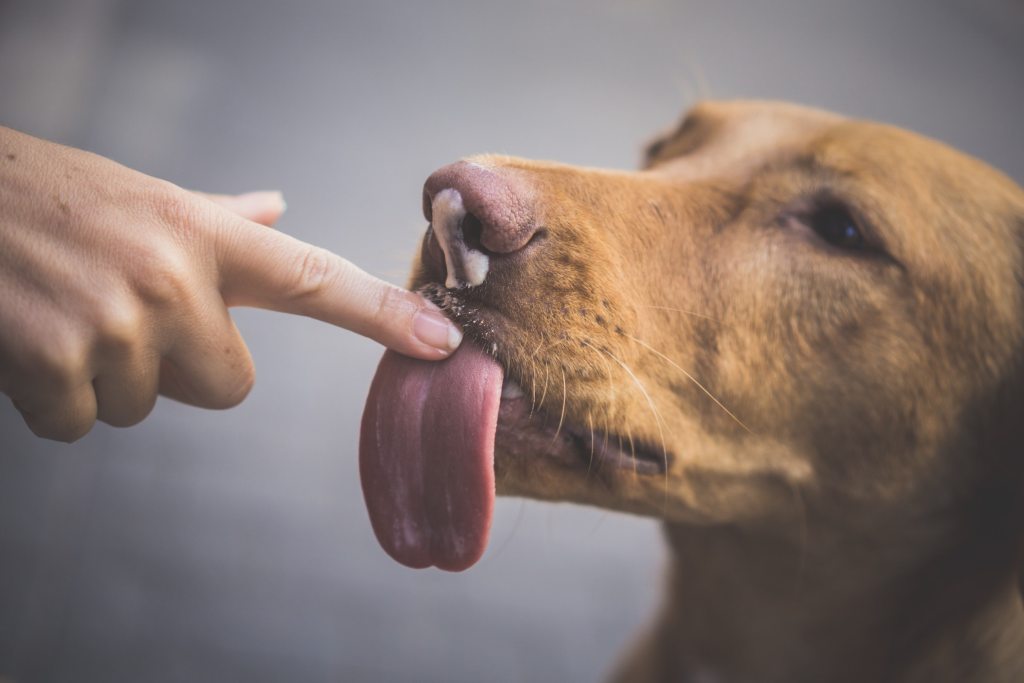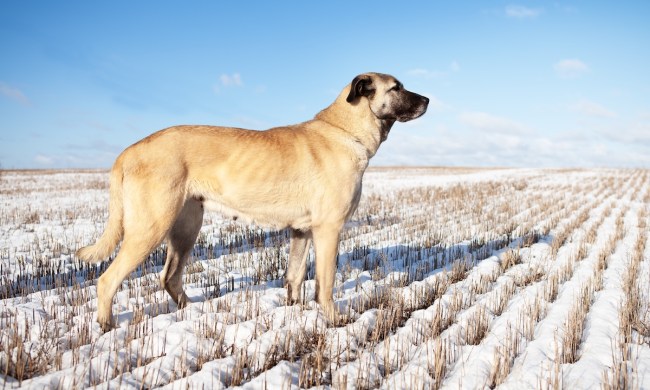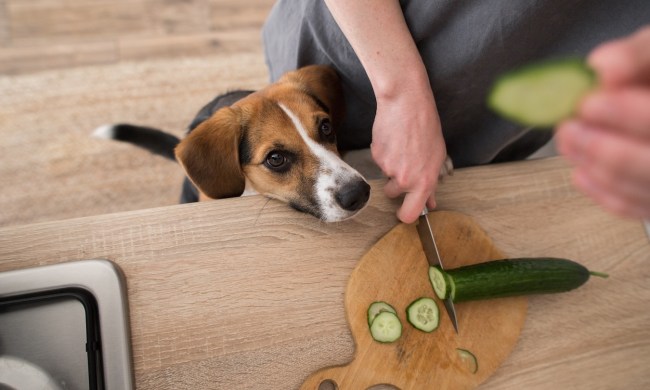Whether you’re inspired by the adorable viral videos or that sweet look of pleading in your dog’s eyes, letting Fido enjoy a Starbucks Puppuccino can be the highlight of your day. Despite being a little messy, this yummy treat is so worth it — who doesn’t love some happy tail wags and a cream-covered nose?
This popular Starbucks trend has left many dog owners with questions, though. What exactly is in a Puppuccino — or “Pup Cup” — and is it safe for dogs? Several veterinarians and canine experts have weighed in with their opinions and advice, so you’ll know exactly what to do next time you and your buddy hit up Starbucks — or anywhere else that offers a similar treat.
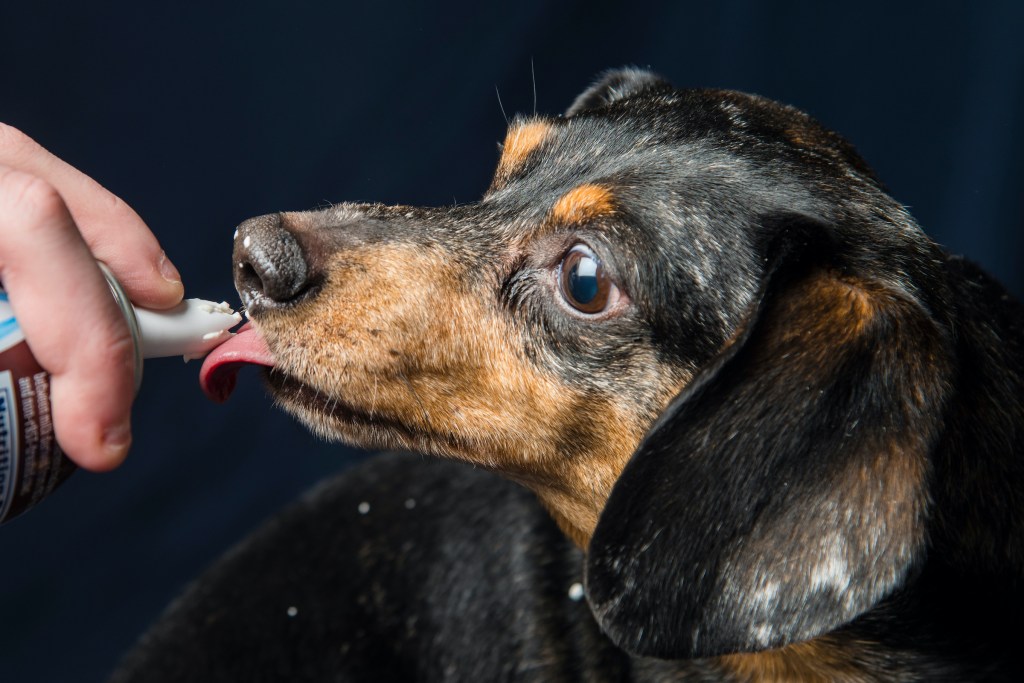
What is a Puppuccino? Will I always get the same thing when I order one?
When you order your dog a Starbucks Puppuccino, or Pup Cup, all you get is a cup of whipped cream for your buddy to enjoy. Most of the time, you’ll get a three-ounce espresso cup filled with the sweet treat, but every now and then, you’ll run into a location that offers Pup Cups in kids’ or short-size cups, which are eight ounces in size. That’s great news for larger dogs!
Starbucks makes its whipped cream out of two popular ingredients: heavy whipping cream and vanilla syrup. It’s rare to find a store that’s out of either of these products, so whipped cream is virtually always on the menu. Puppuccinos have become more and more popular, too — especially since viral videos of dogs enjoying this treat are nearly everywhere online — so your barista will know exactly what you’re talking about no matter what you call it. Puppuccino, Pup Cup, a cup of whipped cream — it’s all the same!
And, as TikTok can confirm, the baristas love meeting your fur babies just as much as you love bringing them to coffee.
@julianna_kopp
Can dogs have whipped cream? Experts give the thumbs up for this occasional treat
As much as dogs love whipped cream, it’s understandable why many pet parents question its safety. After all, it’s a very sweet treat that even some people don’t sit well with. Luckily, veterinarian toxicologist Renee Schmid, DVM, DABVT, DABT, told Daily Paws that many dogs don’t experience any negative side effects from the occasional whipped cream tidbit. In fact, the behavioral scientists at The Ohio State University Veterinary Medical Center even recommend using a small amount of this sweet treat to help your dog take a pill. Whether it hides the pill well enough is another story…
Dogs who do face the consequences of eating whipped cream will experience gas, diarrhea, and–less commonly–vomiting. Typically, notes Daily Paws, these effects will stop once the offending substance is out of their system.
It’s important to note that while Starbucks’ particular whipped cream recipe is safe for dogs in moderation, others may not be. If whipped cream is sweetened with artificial sweeteners like xylitol (aka birch sugar), it can be toxic to your dog (via VCA Hospitals). Low-sugar and sugar-free products are more likely to contain xylitol, but it’s always worth double-checking.
Schmid and her colleagues at Pet Poison Helpline give the A-OK for whipped cream, but that doesn’t mean it can be an everyday treat. Heavy whipping cream is high in fat, while vanilla syrup contains a lot of sugar, so having too much of the fluffy stuff can lead to problems like weight gain, diabetes, and pancreatitis (via PetMD). Besides, anything tastes better when it’s a special treat!
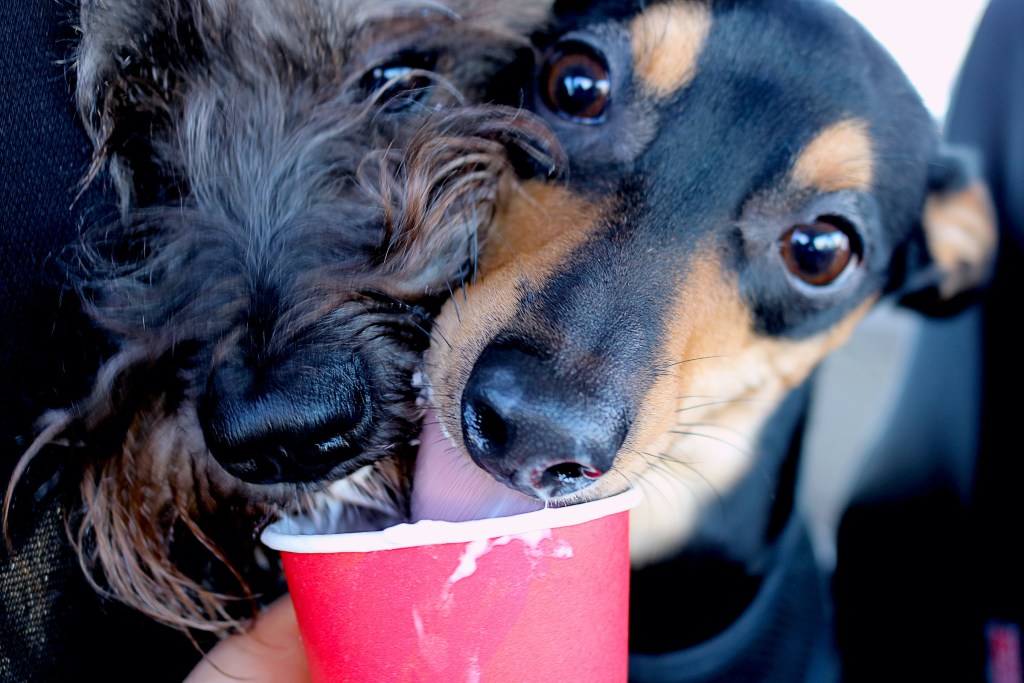
Lactose intolerance can stop dogs from enjoying a Pup Cup
Why do some dogs react well to a Starbucks Puppuccino while others get quite sick? It all comes down to lactose intolerance — the same condition many people face every day. While some folks (and dogs) can power through mild symptoms, others must avoid dairy products altogether.
According to the experts at the American Kennel Club (AKC), the most common symptoms of lactose intolerance in dogs include:
- Bloating
- Gas
- Loose stools
- Vomiting
- Abdominal pain or discomfort
Diagnosing lactose intolerance in dogs can be tricky, especially since dogs can experience these symptoms if they consume too much dairy at once, even if they’re not lactose intolerant (via AKC). You’ll have to offer a small amount of milk to test whether your pup fits the bill. This way, you’ll know exactly what your dog is reacting to (lactose or just overconsumption) and how intense the symptoms can be.
For a lot of dogs, lactose intolerance is not a problem. Even so, it’s important for pups to enjoy a sweet treat like Starbucks Puppuccinos on a semi-irregular basis to avoid any stomach upset or long-term health concerns. Besides, waiting a while between Starbucks runs will make the next Pup Cup so much more special!
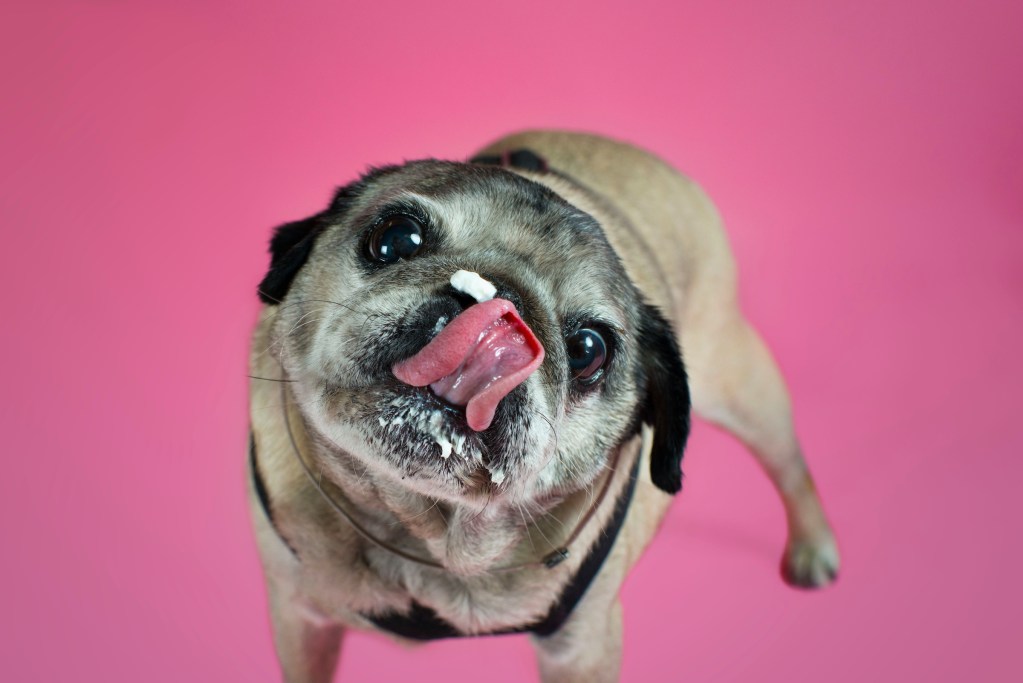
Pup Cup alternatives for lactose-intolerant dogs that need a treat
Whether your dog is sensitive to dairy or on a low-sugar diet, you may need to find an alternative treat to compete with the coveted Puppuccino. Don’t worry — there are plenty of options. Many animals enjoy refreshing ice water in the summertime, and some even splurge with freeze-dried fruit mixed in. Depending on what snack you order, you might be able to share a bite with your buddy. If all else fails, it doesn’t hurt to keep a small bag of dog treats in your car for times like this — as long as you don’t live in bear country, of course.
Pup Cups, or Puppuccinos, can be a perfect treat for some dogs to enjoy on special occasions. Unless you’ve noticed your fur baby feeling unwell after eating whipped cream, this Starbucks treat is perfectly fine. Just try to resist stealing a lick before they get to it.
